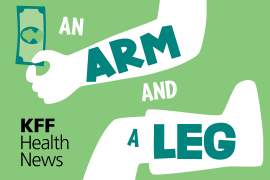Every week, reporter Jessica Marcy selects interesting reads from around the Web.
Time: Peter Goodwin: The Dying Doctor’s Last Interview (Video)
Dr. Peter Goodwin, a family physician and right-to-die activist, took his own life on March 11, 2012, at age 83. He did it legally, with the blessing of his family and doctors, under the Oregon law allowing physician-assisted suicide — the first such law in the country — that Goodwin was instrumental in creating. … He did not look like a dying man; he was chirpy and alert … However, as a result of his fatal disease — a Parkinsons-like condition called coritcobasal degeneration — he could not use his right hand or do much reliably with his left. … “I can no longer eat in public,” Goodwin said. “My balance is gradually deteriorating. My three doctors agree that I’m within six months of dying. My attending physician has given me a prescription for medication to end my life and I have had it filled” (Belinda Luscombe, 3/14).
The Atlantic: The Doctor Is Out: Young Talent Is Turning Away From Primary Care
Couple the lifestyle and the training experience with the huge debt burden that U.S. medical students accrue, and deciding on a hospitalist career becomes a rational choice. Dr. Wachter of UCSF compares hospital medicine to site-based specialties that came before it: emergency medicine and critical care. All of these specialties represent a convergence of high-complexity and high-cost care in a single location, where it makes sense to have well-trained specialists who handle the specific set of problems encountered there (John Henning Schumann, 3/14).
American Medical News: How Selling A Practice Kept It In The Family
For the past 30 years, Domingo Ngo, MD, has loved being a gastroenterologist owning a solo practice and the small, one-story building it occupies on a tree-lined street in Stuart, Fla. His wife, Josefina Ngo, RN, was the practice’s nurse. … If Dr. Ngo retired and was unable to find another physician to take his place, there was a chance it would have closed. He hoped it would be able to continue if his son (Benjamin Ngo, MD) joined him. They wanted to work together, but the son … didn’t want to be a solo-practice physician. … Dr. Domingo Ngo did what many other practices have done, or are considering doing — he contacted a local hospital to see whether it would buy the practice (Victoria Stagg Elliott, 3/12).
The Atlantic: Daddy Issues
Recently, a colleague at my radio station asked me, in the most cursory way, as we were waiting for the coffee to finish brewing, how I was. To my surprise, in a motion as automatic as the reflex of a mussel being poked, my body bent double and I heard myself screaming: “I WAAAAAAAANT MY FATHERRRRRR TO DIEEEEE!!!” … let us begin by considering A Bittersweet Season, by Jane Gross. A journalist for 29 years at The New York Times and the founder of a Times blog called The New Old Age, Gross is hardly Kafkaesque. An ultra-responsible daughter given to drawing up to-do lists for caregivers and pre-loosening caps on Snapple bottles, Gross undertook the care of her mother in as professional a way as possible. … What could go wrong? (Sandra Tsing Loh, March 2012).
AARP Bulletin: Hospitals May Be The Worst Place To Stay When You’re Sick
Today, more than a decade into the fight against medical errors, there’s little reason to believe the risks have declined substantially for the 37 million people hospitalized each year. In fact, recent studies suggest a problem that’s bigger and more complex than many had imagined. A report released in January on Medicare patients found that hospital staff did not report a whopping 86 percent of harms done to patients. If most errors that harm patients aren’t even reported, they can never be tracked or corrected (Katharine Greider, 3/1).
Columbia Journalism Review: Should Health Journos Use Hospital Safety Data?
In a highly touted effort to improve the quality of hospital care, the federal government has started disclosing data that ostensibly reveals which hospitals are best (and worst) at keeping their patients safe. But a few weeks ago, Kaiser Health News presented some not entirely unexpected news that turned conventional wisdom about patient safety data into, well, not-so-conventional wisdom. A piece by Jordan Rau raised serious questions about the efficacy of the federal government’s efforts to turn patients into savvy shoppers. The data, it seems, may not be ready for prime time. I rang up Rau, a veteran health journalist and an expert in these matters, for a Q and A to help all of us who may be tempted to use the data in ways we probably shouldn’t (Trudy Lieberman, 3/12).






